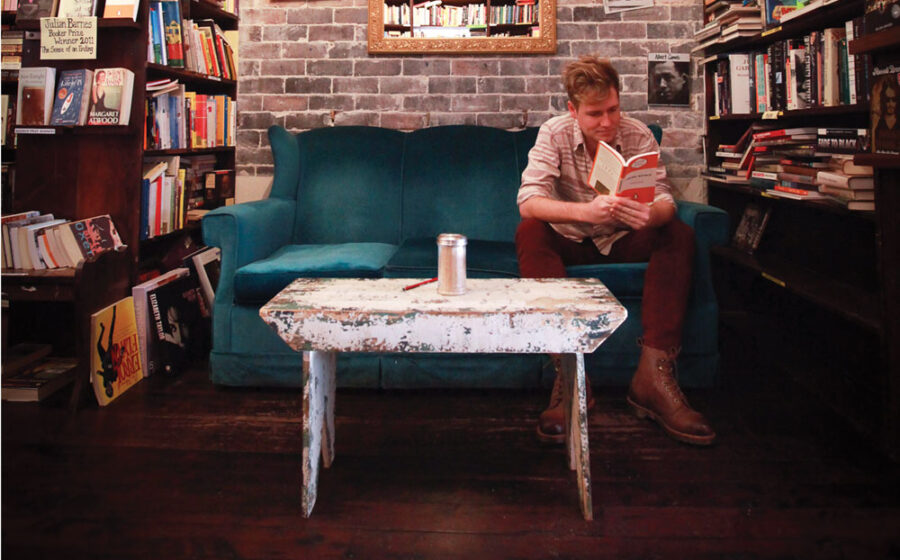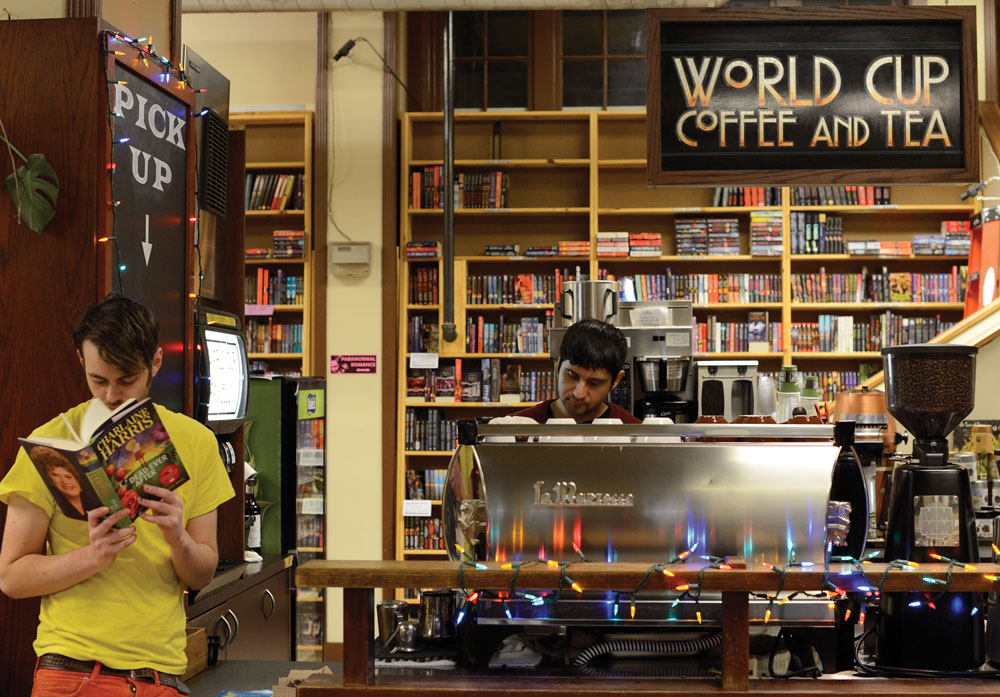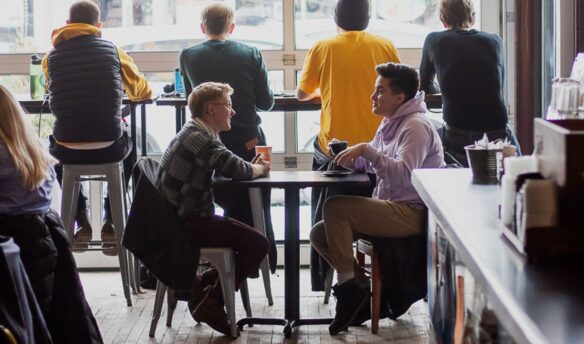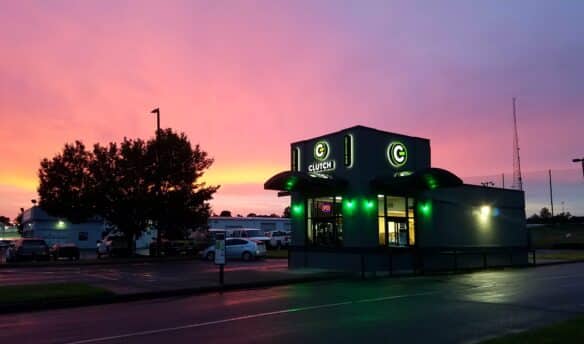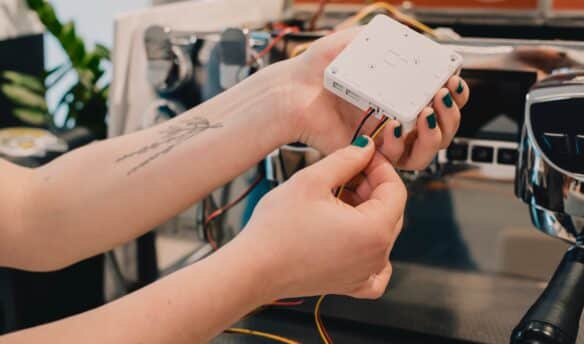This story was originally published on February 19, 2014.
A few years ago, the owners of The Dolphin Bookshop in Port Washington, N.Y., decided to move the store into a bigger space and build a café. Since expanding, The Dolphin has developed into a beloved community marketplace: a social center known for its live music, book readings, local art, children’s story hour, toy store, specialty coffee, gluten-free baked goods, carefully sourced shelves of literature, and warm, family-friendly atmosphere.
On a regular day in your coffee shop, you might find a mixture of pairs and solitary patrons enjoying warm beverages—the latter likely accompanied by a newspaper, laptop, or a good book. Could it simply be that cappuccinos and Russian fiction complement each other? Or is there more to the timeless relationship between literature and a desire to imbibe?
In 1920s Paris, a golden age for literary expatriates, cafés were a creative haven for writers like Ernest Hemingway and F. Scott Fitzgerald. In the 1930s, a group called the Inklings—a literary circle that included the writers C.S. Lewis and J. R. R. Tolkien—met at a local pub in Oxford, England, to discuss their latest works. Literature and café culture has been inexplicably linked for decades, perhaps centuries. The two beloved pastimes share a romanticism, but more than that, cafés and bookstores offer a “third place” that provides a soothing escape from work and worries.
The café-bookstore model is not new, but more retailers are reaping the benefits of this win-win combination. Whether you’re thinking of adding literary offerings to an existing café with some extra space or adding a coffee or tea bar to your bookshop, there are myriad reasons to blend the realm of bookselling with the world of coffee and tea.
Reading Your Audience
There are many reasons a bookstore café is a viable business option. For one, diversifying your offerings can help bring in new customers with different tastes. But before you begin stocking your new shop, it’s essential to determine the kind of clientele you’re hoping to attract.
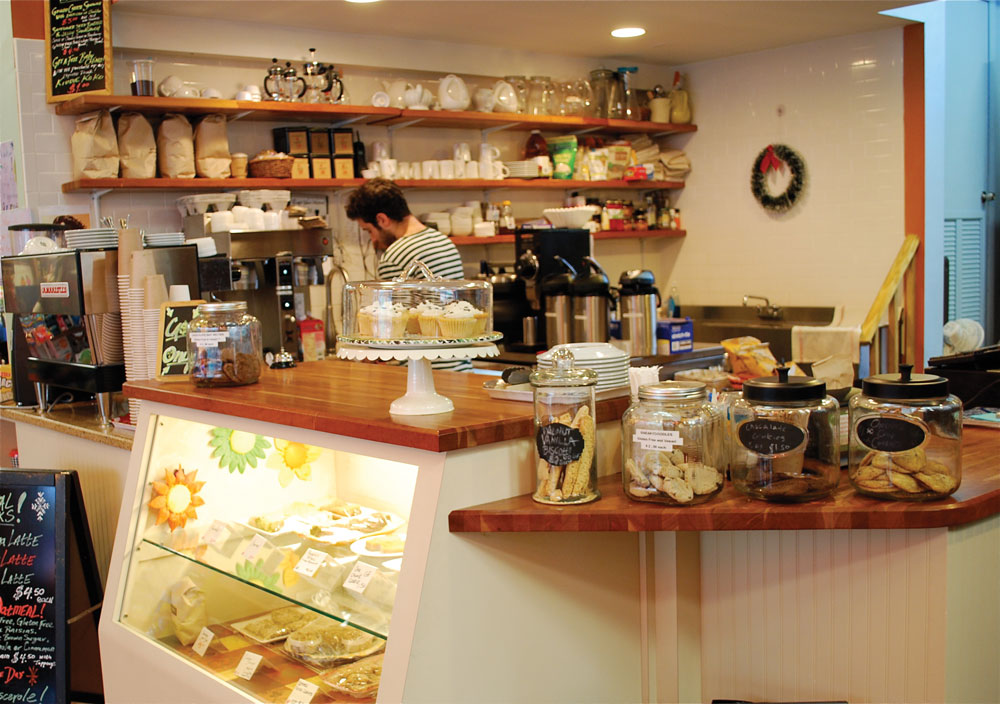
When Kathy and Gary Robson opened Red Lodge Books in Red Lodge, Mont., customers were clamoring for a café addition, but espresso didn’t seem like the right fit. “Pretty much starting the day we bought the store, people were telling us, ‘Put in a coffee shop, put in a coffee shop!’” says co-owner and author Gary Robson. “But I don’t really like coffee, and there’s an excellent coffee shop down the street.” Eventually, the Robsons decided that a café could boost their business, but instead of investing in a coffee bar, they began carefully sourcing a wide range of loose-leaf teas.
The store’s tea profits, including bulk tea sales and the sale of tea accessories, make up more than a quarter of the shop’s revenue. Because tea sales peak in off-hours (generally around noon and in the early evening), the tea bar at Red Lodge doesn’t have to compete with the coffee shop down the street—in fact, they’ve even shared employees at times.
Before they expanded their business, the Robsons weighed their options. Because the town of Red Lodge attracts skiers in the winter and summer sightseers passing through on their way to nearby Yellowstone National Park, the Robsons knew that most of their customers would be tourists looking to linger, and tea seemed like the perfect accompaniment for relaxed book shop browsing. Tea is also a drink the Robsons enjoy that makes sense in the shop’s serene atmosphere. With the next-closest tea shop more than an hour away, tea was also a commodity the Robsons could carry exclusively in their small town.
Knowing what kind of business they wanted to cultivate and picking a product they were passionate about helped the Robsons create a niche. With a menu of 120 teas, Red Lodge can offer a diverse product that complements its existing space. “When people go into tea shops, they expect it to be calm, quiet, relaxing, and soothing,” says Gary. “That is much more in keeping with what we want in a bookstore.”
Turning The Page
When Jane Turner opened Gertrude & Alice Bookstore Café in Bondi Beach, a popular seaside neighborhood in Sydney, her goal was to combine her two greatest loves: coffee and books. That enthusiasm is evident in her focus on providing the most comfortable café possible for a loyal customer base. “We created a quiet haven where the books are scattered everywhere, and there are big comfy lounge chairs and great background music—it’s sort of like your lounge room at home,” says Turner, who named her shop after literary greats Alice B. Toklas and Gertrude Stein.
By creating a third place marked by a love of literature and creature comforts such as hearty food and wine, good coffee, and inviting furniture, Turner has crafted a community-oriented space defined by a close-knit staff and consistent offerings (the shop is open 15 hours a day, seven days a week.) “We genuinely love our customers and work hard at our service,” says Turner. “Our customers are an extension of that connection we all have.”
Combining a bookstore with a café creates community by providing customers with a space for discussion and an opportunity to absorb knowledge amid their shopping. It also offers a venue to expand on that theme through author readings, poetry nights, and other literary events. Or, in the case of Gertrude & Alice, it provides a warm, steadfast respite from the outside world.
Stay Awhile
A bookstore may see hundreds of customers in bustling neighborhoods with ample foot traffic daily. But once those eager shoppers have made their purchases, it’s doubtful they’ll want to linger. Adding a café with comfortable seating and high-quality coffee and tea can help with the high rent that often comes with such a desirable location by encouraging customers to stick around longer and spend more. Not only are coffee, tea, and the foods that pair with them going to boost sales, but a café creates a realm of relaxation for an otherwise hurried clientele.
This example holds at Powell’s City of Books in downtown Portland. Measuring an entire city block three stories high, Powell’s is one of the world’s largest booksellers and one of Portland’s more popular tourist destinations. Not only does Powell’s café give patrons a place to peruse books before buying and caffeinate for the trek to the third floor, but it also makes visiting the literary mecca a more comfortable experience for first-timers, who might be overwhelmed by the store’s color-coded rooms and sky-high shelving (fold-out maps are available for those who get turned around easily).
World Cup Coffee and Tea in Powell’s City of Books in Portland. (Annalise Reinhardt.)
World Cup owner Dan Welch describes Powell’s café patrons as book-hungry regulars and those seeking the City of Books “experience.” He says being a part of the bookstore’s magic is a definite advantage for the World Cup brand. “We stick pretty much to the Portland metro area, that’s our game, and Powell’s is a destination for visitors of Portland,” says Welch. “It brings notoriety to us because it is a marquee location in the city, and for business purposes, it gives a great exposure to our brand. Reciprocally, Powell’s has a specialty-quality coffee they can offer their customers.”
Another way to capitalize on literature’s mystique is by weaving the theme into your café: The Dolphin Bookshop offers a menu of sandwiches named after famous books (Catcher in the Rye, Under the Tuscan Sun), World Cup sells an exclusive roast, the Bookworm Blend, at its Powell’s location. Similarly, at Red Lodge, the culinary section is full of books on tea for patrons hoping to learn more after perusing the tea bar’s impressive offerings.
Building out your bookstore café to suit your shop’s needs best is essential. Robson at Red Lodge notes that coffee shops have an “energetic” atmosphere, so he opted for a relaxing tea bar instead. Literary happenings and live music make sense at The Dolphin in Port Washington. At Gertrude & Alice, events limit lounge time for regulars and are mainly reserved for special occasions. Determine the type of shop you want to have—is it laid-back or lively? Modern or Old World? Then craft your customer experience around that vision.
Carving out a niche will also set your shop apart. Maybe you focus on a literary genre (cookbooks work well aside from coffee and tea) or stick to pour-overs and manual-brew methods—having a theme gives your shop individuality. This is also good advice if you’re working with a smaller space, such as an existing café with minimal shelving.
Regardless of how you build your business, making a shop more versatile and welcoming of a new type of customer never hurts. History shows that books and beverages are the perfect fit, so adding great literature or high-quality coffee and tea to your offerings is guaranteed to draw attention.
Cover photo by Nina Claire. This story was originally published on February 19, 2014 and has been updated according to Fresh Cup’s current editorial standards.

